Patho- Module 3: Respiratory (EXAM 2) KNACK PROOFED
1/123
There's no tags or description
Looks like no tags are added yet.
Name | Mastery | Learn | Test | Matching | Spaced |
|---|
No study sessions yet.
124 Terms
what is the upper respiratory tract?
nose, pharynx, larynx
what is the lower respiratory tract?
-trachea, bronchi, bronchioles, lungs
-think lower=lungs
how many lobes does the right lung have?
3 (superior, middle, inferior)
how many lobes does the left lung have?
-2 lobes (superior and inferior)
-this is because our heart is on our left side and there needs to be room for it
where is the site for gas exchange?
alveoli
what are alveoli?
-sacs at the end of each bronchoiles
-covered in surfactant which prevents them from collapsing by reducing surface tension
-surrounded by capillaries for diffusion of gases
what is infectious rhinitis (aka the common cold)?
-upper respiratory infection
-highly contagious
-caused by the rhino virus
-can lead to a secondary bacterial infection!
-incubation of 2-3 days (if longer we are highly concerned)
-inspiratory vs expiratory
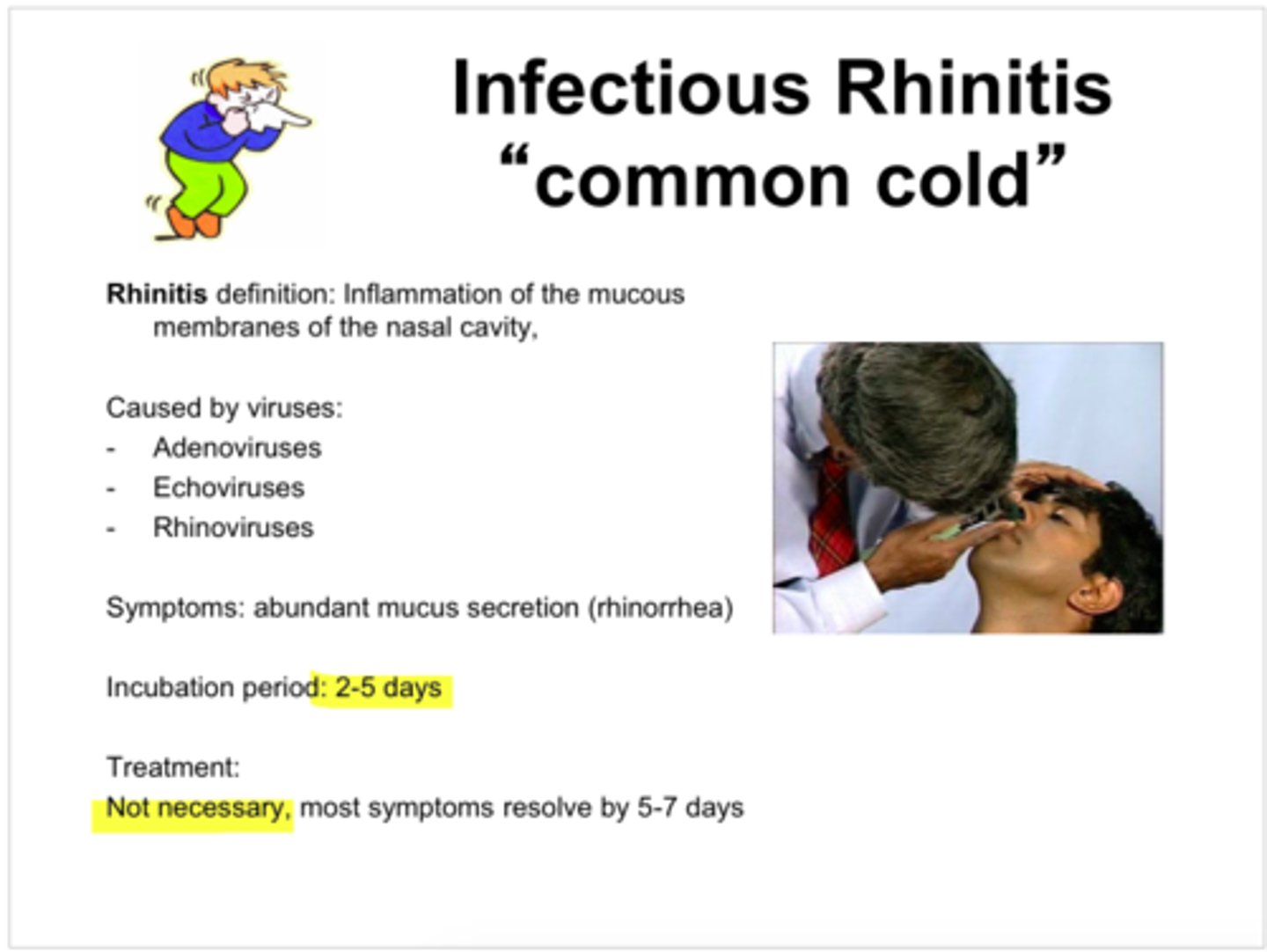
what are the manifestations of infectious rhinitis?
-sneezing
-nasal congestion/nasal discharge
-sore throat
-nonproductive cough
-malaise (feeling tired)
-myalgia (muscle aches)
-low-grade fever,
-hoarseness, headache, and chills
what is rhinosinusitis?
-upper respiratory infection
-inflammation of the sinus cavities
-causes: viruses, bacteria, and fungi
-exudate collects and blocks sinus cavities
-acute: 4 weeks or chronic: more than 12 weeks with constant pain and leaking
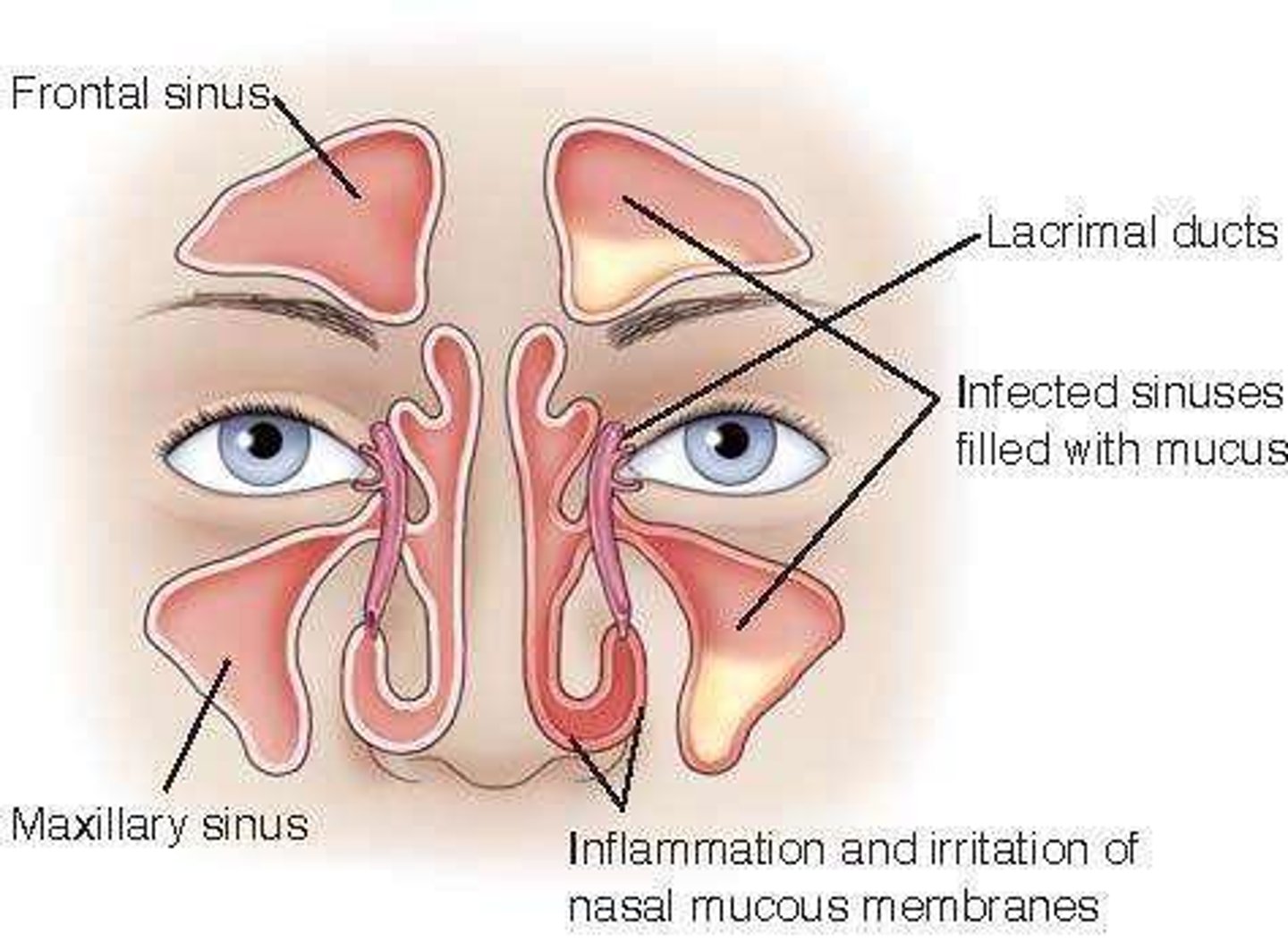
what happens in rhinosinusitis?
the lining of the sinuses gets swollen and inflamed and mucous (exudate) builds up which causes drainage to get blocked creating pressure and pain
what are the manifestations of rhinosinustitis?
-facial pain!
-nasal congestion lots of mucous
-fever
-sore throat
what is epiglottitis?
*highly tested
-upper respiratory infection
-it is an inflammation of the epiglottis (the lid that covers our tracheal opening aka we need it to breathe)
-it is a medical emergency!!
-these patients are extremely sick and low energy

what are the causes of epiglottitis?
-haemophilus influenzae type B
(Hib) (common infection in children)
-throat trauma from hot liquids or foreign objects
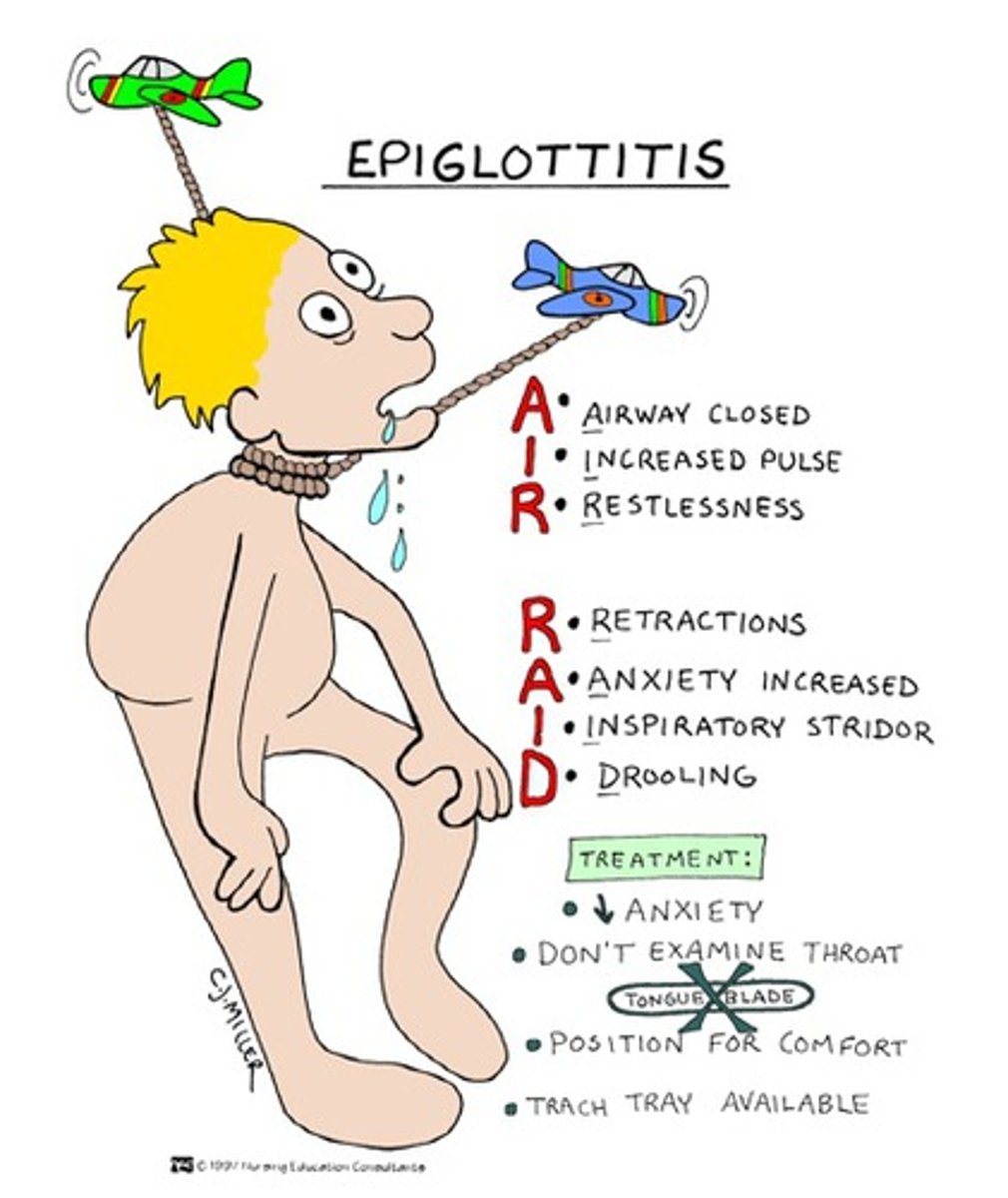
what happens in epiglottitis?
1. the epiglottis becomes inflamed and swollen
2. swelling pushes down and blocks the trachea (windpipe)
3. this causes airway obstruction=NO BUENO because it causes trouble breathing
4. the body struggles for oxygen leading to cyanosis and pallor
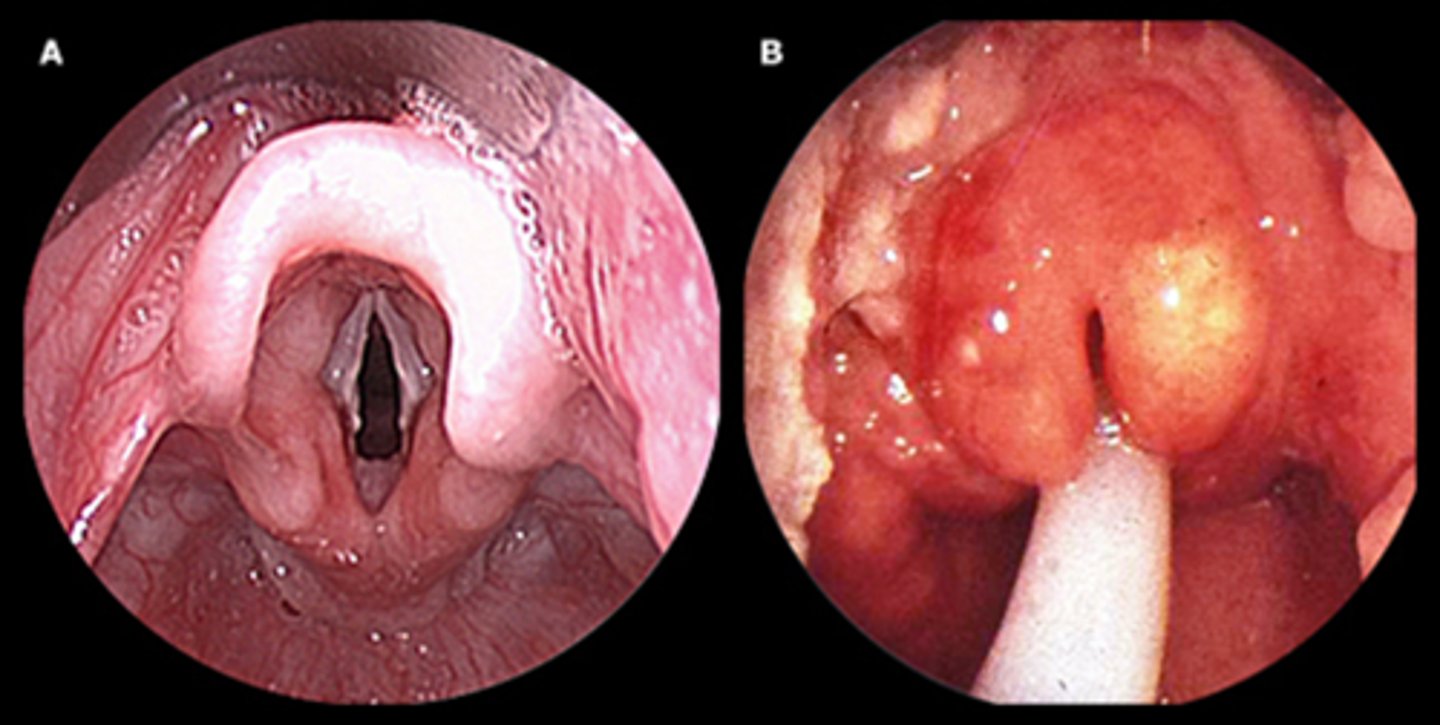
what are the manifestations of epiglottitis?
-drooling with the mouth open(cannot tolerate oral secretions aka cant swallow)
-fever
-odd sitting forward position (trunk leaning forward)!
-tripod position!
-inspiratory stridor!
-respiratory distress!
-central cyanosis!
-anxiety
-pallor
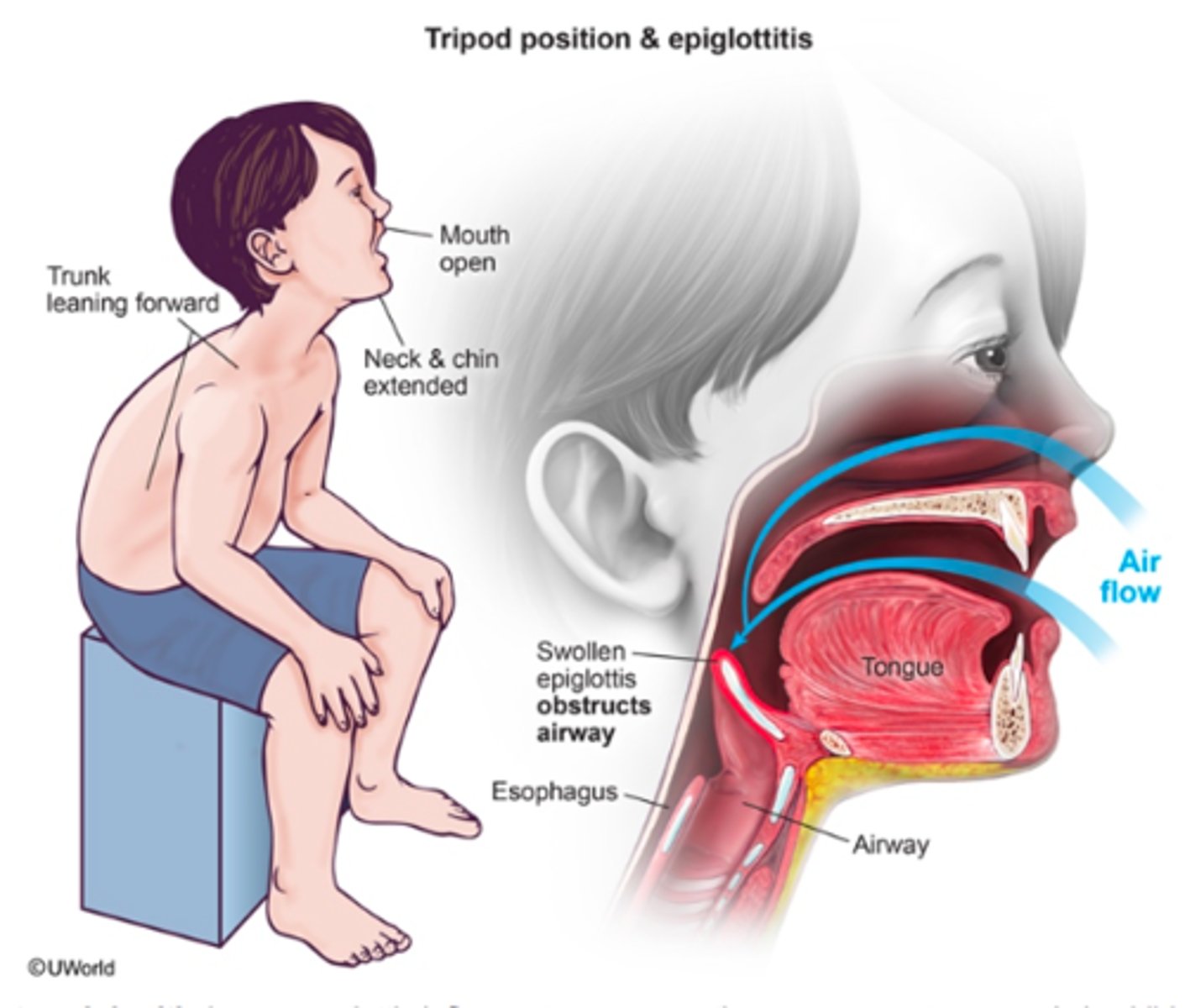
what is tripod positioning?
a sitting position where the person leans forward, supports themselves with their hands on their knees or on a surface like a chair or table
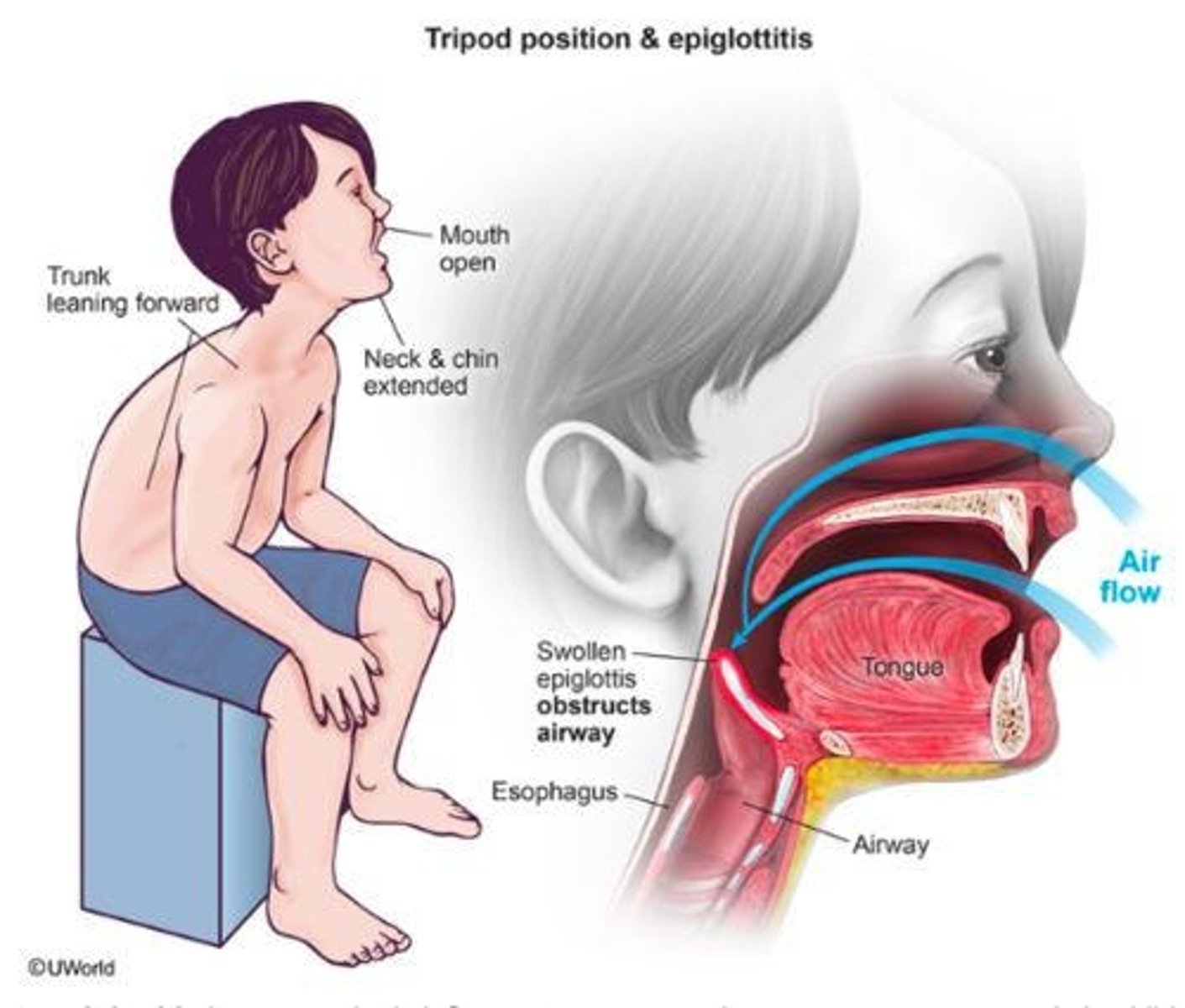
What is laryngitis?
-upper respiratory infection
-inflammation of the larynx (our voice box)
-self limiting (meaning that it gets better on its own)!
-worst case scenario is that the larynx swells so much that breathing stops
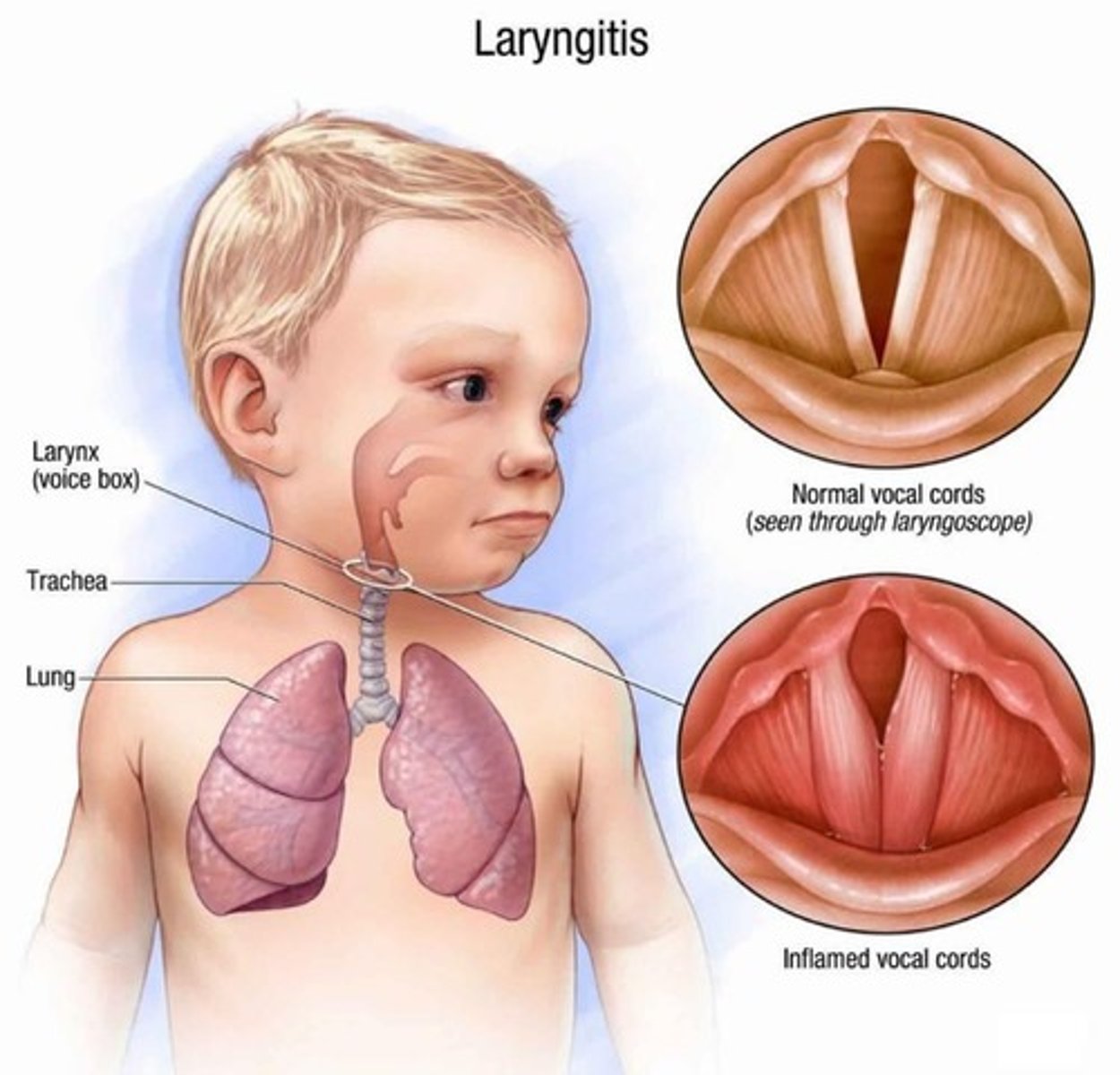
what are the causes of laryngitis?
-infection
-increased upper respiratory exudate
-overuse (think going to a concert!)
what are the manifestations of laryngitis?
-hoarseness
-difficulty breathing
-weak voice or voice loss
-tickling sensation
-raw feeling in the throat (no mucous)
-sore throat
-dry cough
what is laryngotracheobronchitis? (aka croup)
*highly tested
-common viral infection in children usually parainfluenza viruses and adenoviruses
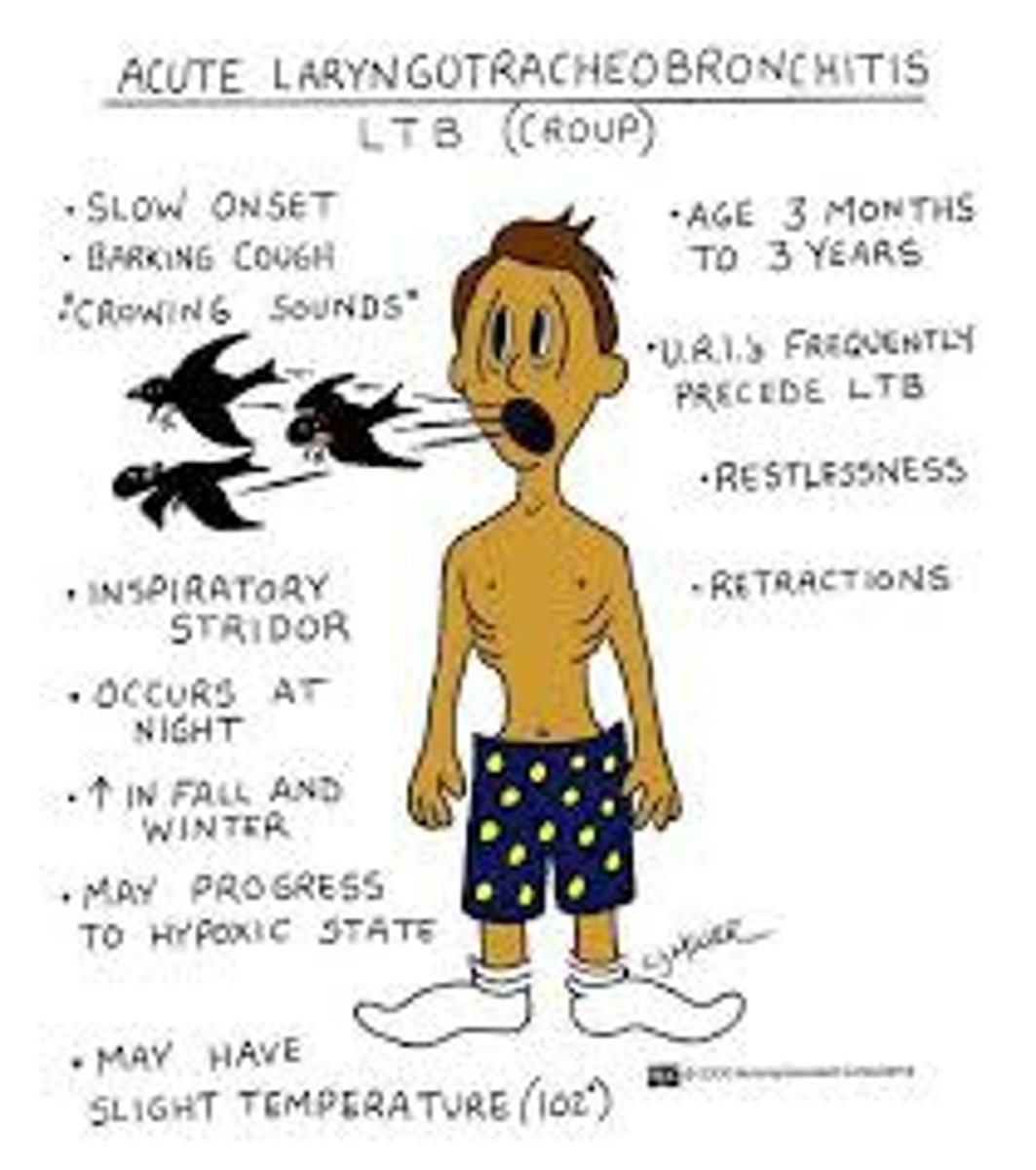
what happens in croup?
larynx and surrounding area swell, leading to airway narrowing, obstruction, and respiratory failure
what are the manifestations of laryngotracheobronchitis? (aka croup)
-seal like barking cough!
-congestion
-hoarseness
-inspiratory stridor! (high pitched sound heard during inhalation)
-dyspnea
-anxiety
-central cyanosis

what is influenza? *(aka the flu)
-viral infection that may affect the upper and lower respiratory tract
-a highly adaptive and intelligent virus
-incubation time of 1-4 days
-children, elderly, and immunocompromised are at risk!
what are the different types of influenza?
type a: most severe! and most common in the united states
type b: less severe
type c: usually causes small outbreaks (seen more in animals)
what are the manifestations of influenza?
-fever
-headache
-chills
-dry cough
-body aches!
-nasal congestion
-sore throat
-sweating
-malaise (you feel too sick to do anything else)
how can we prevent influenza?
-hand washing
-isolation
-avoiding crowds
-annual vaccination
what is acute bronchitis?
-lower respiratory infection
-inflammation of the tracheobronchial tree or large bronchi
-lots of mucous
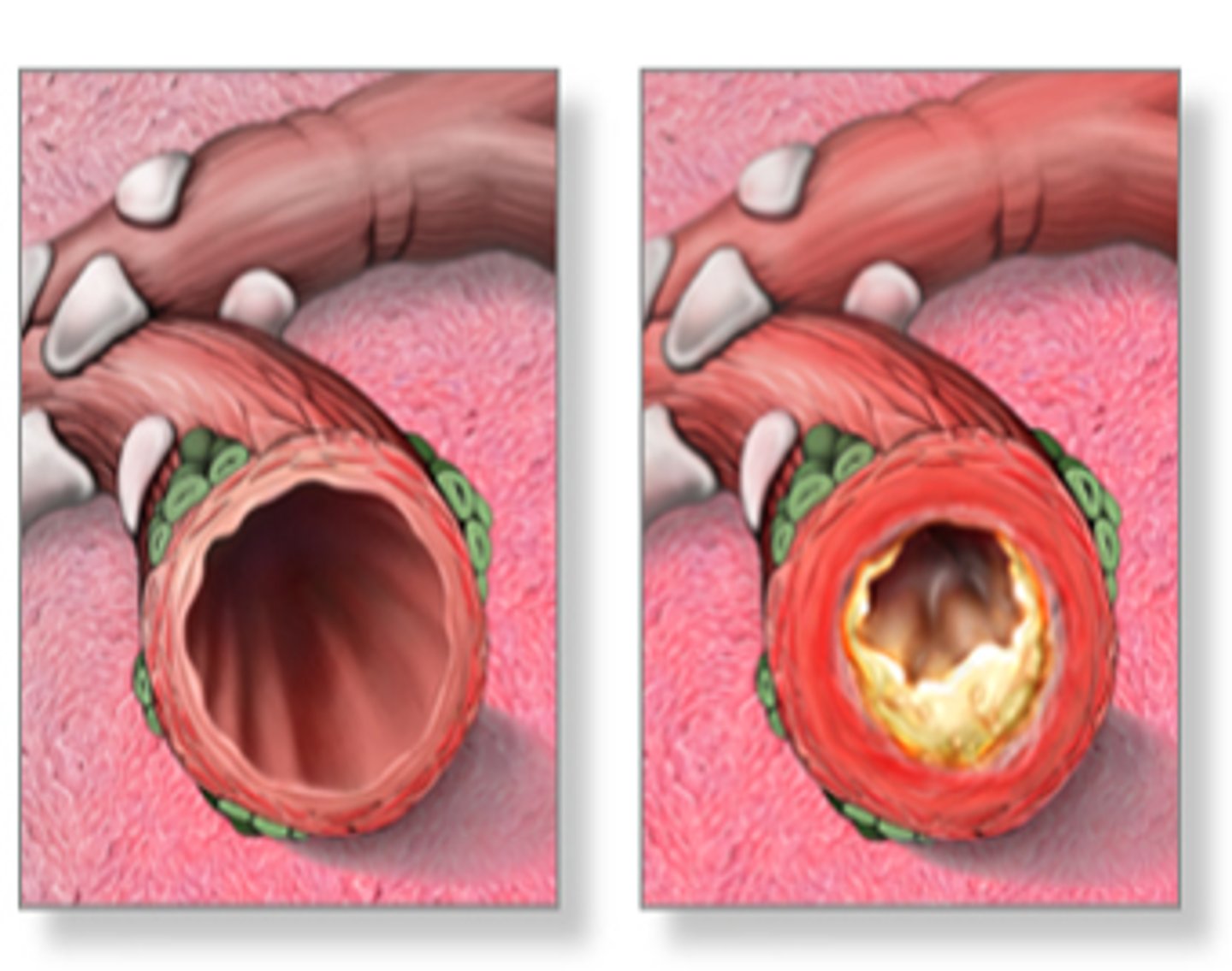
what causes acute bronchitis?
-viruses
-bacteria
-irritant inhalation (smoke or fumes)
-allergic reactions
what are the manifestations of acute bronchitis?
-productive OR nonproductive cough!
-dyspnea
-wheezing
-low grade fever!
-pharyngitis (sore throat)
-malaise
-chest discomfort!
how do we diagnose acute bronchitis?
-history
-physical examination
-X-ray
what is bronchiolitis?
-lower respiratory infection (can go from upper to lower)
-common acute inflammation of the bronchioles
-usually respiratory syncytial virus (RSV)
-more frequent in children younger than 1 year and during the winter months!!
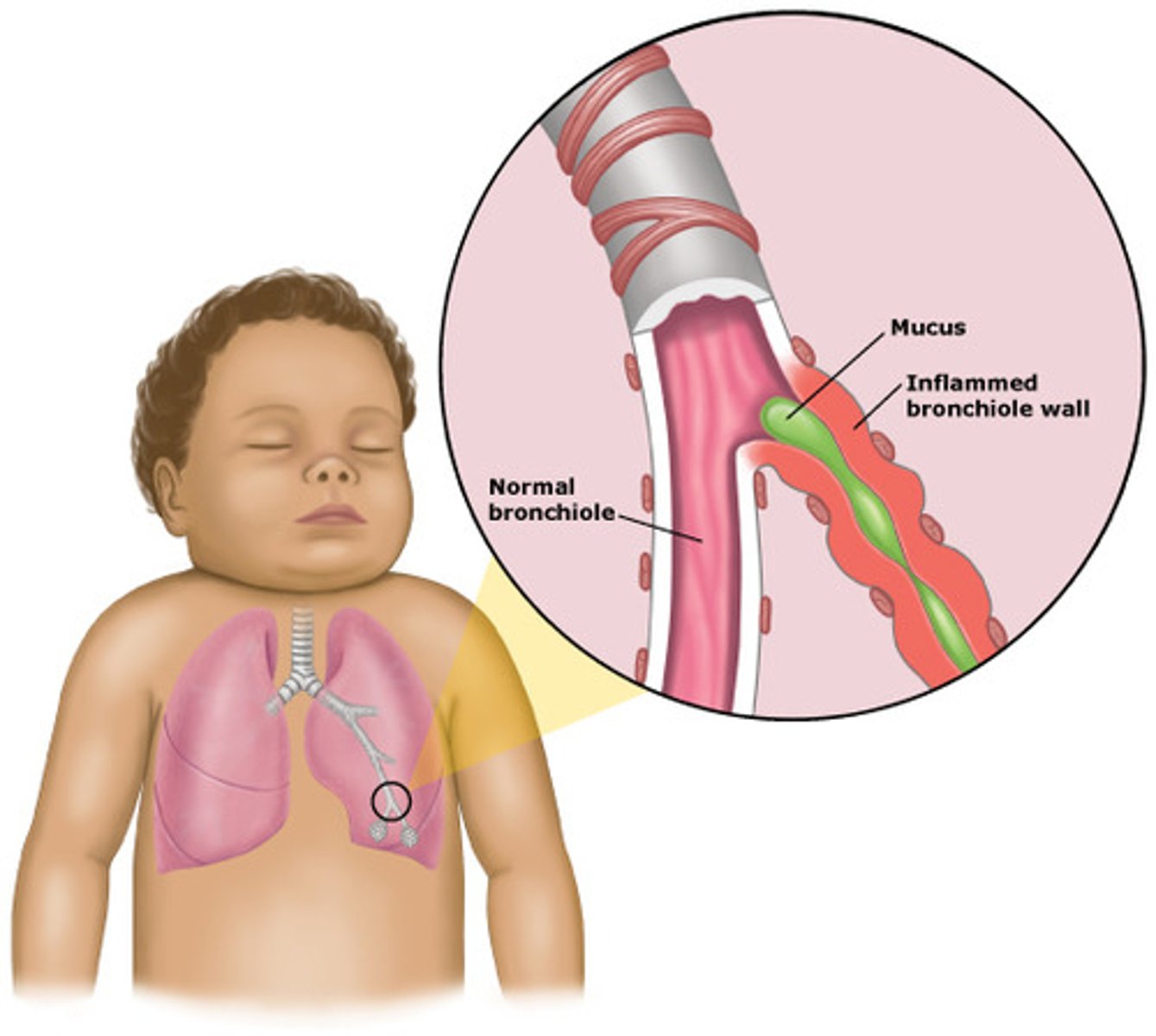
what happens in bronchiolitis?
1. virus infects the bronchioles
2. this causes swelling and mucous buildup
3. this then narrows our airways and makes it harder to breath
4. this then leads to atelectasis and if extremely severe respiratory failure
what can bronchiolitis lead to?
-atelectasis (partial or complete collapse of lung/lobe)
-respiratory failure
what are the differences between acute bronchitis and bronchiolitis?
-bronchiolitis is MORE dangerous!
-it WILL lead to atelectasis and respiratory failure IF NOT treated
-RSV is the main cause of bronchiolitis
what are the manifestations of bronchiolitis?
-chest retractions!!
-nasal drainage
-nasal congestion
-cough
-wheezing
-rapid and shallow breathing
-dyspnea
-tachycardia
-malaise
what is pneumonia?
-inflammation of the lungs and produces EXCESS fluid and causes an infection
-damage to the bronchial mucous membranes and alveolocapillary membranes
-infectious debris and exudate
-some microbes will release toxins from cell walls which will further lung damage
-top ten leading causes of death in the US
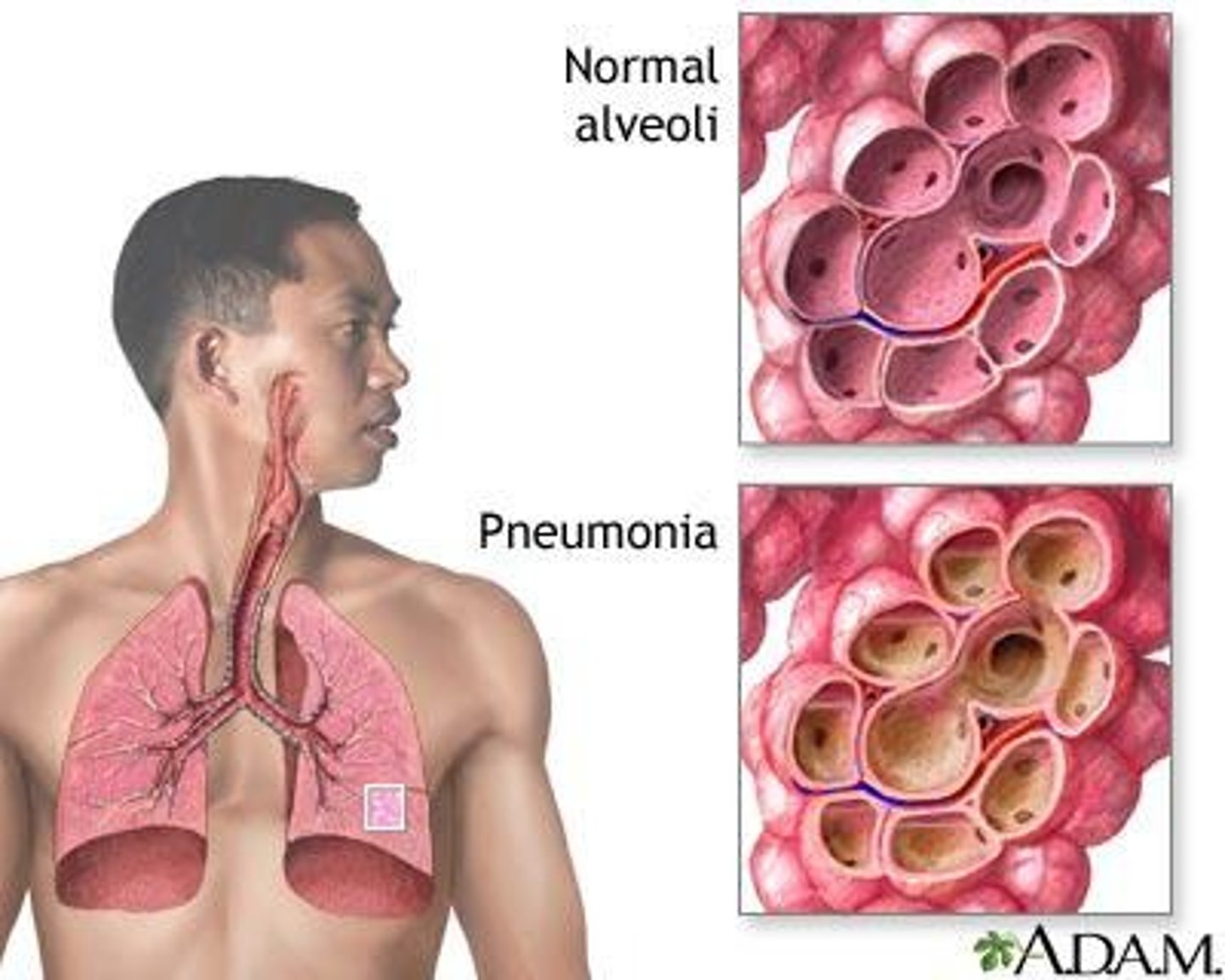
what is the most common route for lower tract infections and the most common cause for pneumonia?*
-aspiration of oropharyngeal secretions!!
-secretions are loaded with bacteria
what is the deadliest type of pneumonia?
-streptococcus pneumonia
-also the most common!
what is primary pneumonia
when the agent is inhaled and causes pneumonia
what is secondary pnemonia?
-a complication from another disease
what populations are more susceptible to and the risks of pneumonia?
-children
-older people
-immunocompromised patients
what are some ways to acquire pneumonia?
-through inhalation of microorganisms that are released in the air (infected individual coughs, sneezes, talks)
-contaminated respiratory therapy equipment such as endotracheal tubes
what causes pneumonia?
-pneumococcus (Streptococcus pneumoniae) is the most common and lethal cause of outpatient and inpatient pneumonias!
-infectious agents
-pulmonary secretion stasis
what are the manifestations of pneumonia?
-productive cough (sometimes nonproductive cough)
-fatigue
-crackles or rales in the lower basis
-tachypnea
-dyspnea
-fever
-chills
-pleuritic pain
-mental status change especially in the elderly
what are complications associated with pneumonia?
-septicemia
-pulmonary edema
-lung abscess
-acute respiratory distress syndrome (ARDS)
what is the most common cause of CAP (community acquired pneumonia)?
-influenza
how do we prevent pneumonia?
-turn, cough, deep breath (TCDB!)
-hand washing
-vaccinations
-smoking cessation
what is tuberculosis?
-infectious disease caused by bacillus mycobacterium tuberculosis
-AIRBORNE! only need one single micro droplet to contract it
-occurs mainly in lungs but can spread to other organs
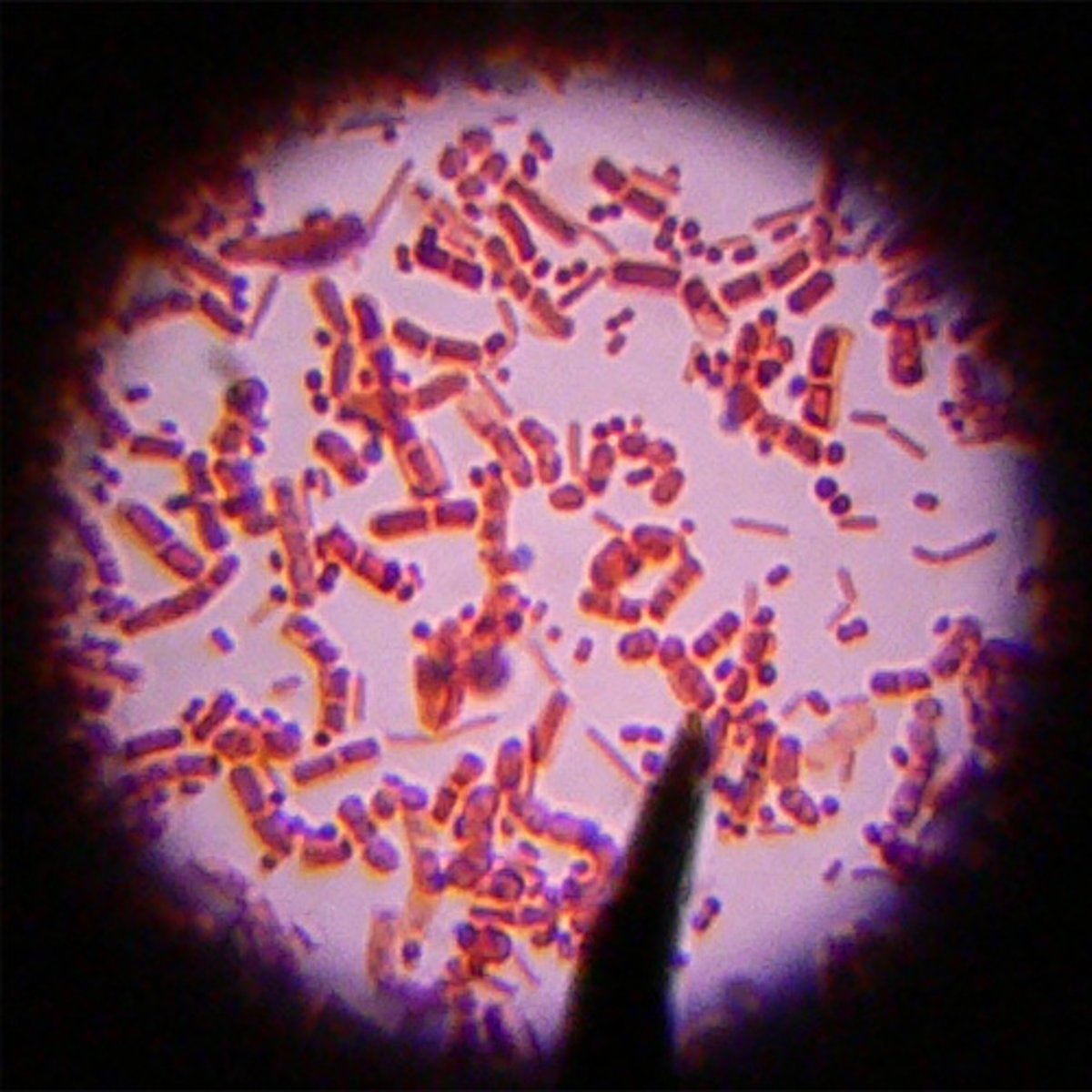
what are granulomas?
-a tight cluster of macrophages, lymphocytes, and fibroblasts to "trap" the bacteria and stop it from spreading
*the immune system can't destroy mycobacterium tuberculosis, so it contains it instead by preventing it from spreading all over the lungs or bloodstream. This is how latent TB forms (bacteria are trapped and inactive).
what is caseous necrosis?
-tissue death with a cheese-like center seen in granulomas
-immune cells release enzymes to kill TB bacteria, but they also damage lung tissue, creating the caseous (cheesy) material.
what is ghon complex?
-a lesion seen in primary tuberculosis made up of a Ghon focus (infected granuloma in the lung) and nearby infected lymph nodes.
-forms when Mycobacterium tuberculosis infects the lung and spreads to hilar lymph nodes.
-shows primary TB infection; over time, it can calcify and appear on X-ray as a small scar.
what is something unique about the bacteria causing tuberculosis?
-bacilli can remain dormant
-the bacteria is inactive, "sleep" in the body without causing symptoms
-a person may feel fine but will test positive for TB
when do secondary infections occur in tuberculosis?
-most likely to occur during the reactivation period of dormant bacilli
what is latent tuberculosis?
-someone who is infected but do not have an active infection
-occurs during reactivation of dormant bacilli
*ONLY people with active tb can spread the infection to others
what are red flags/manifestations for tuberculosis?
-hemoptysis (coughing up blood)!
-productive cough!
-night sweats!
-fever
-chills
-fatigue
-unexplained weight loss!!
-anorexia
what are ways to prevent tuberculosis?
-vaccination
-respiratory precautions
-adequate ventilation
-appropriate isolation
what is asthma?
-REVERSIBLE but not curable this is a CHRONIC condition!
-acute airway inflammation with broncho constriction, spasms, edema, and mucous production
-often the result to a strong immune reaction to an antigen but we do not really know
-chronic with periods of symptoms but also intermittent periods
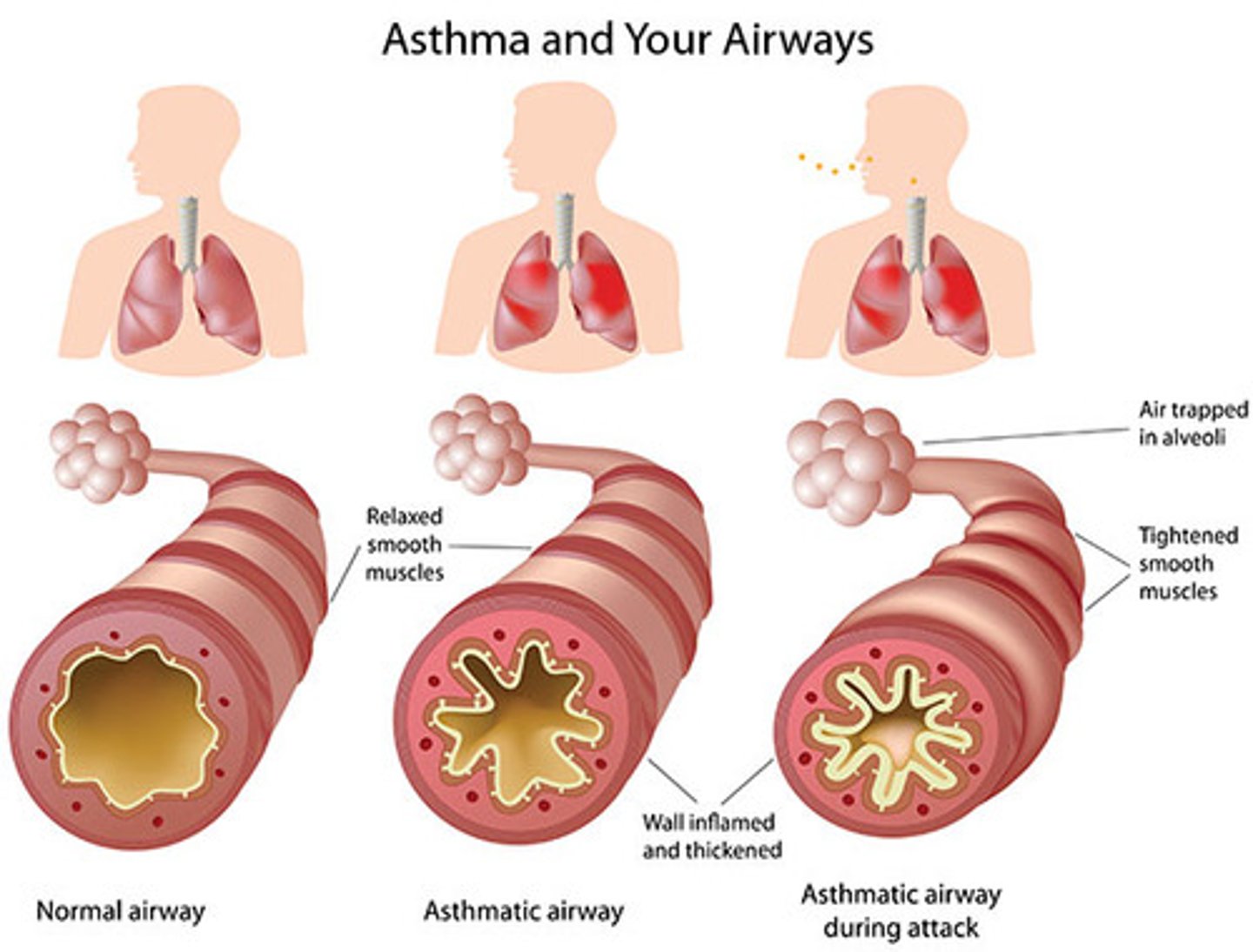
which asthma is more common in children/adolescents?
-extrinsic asthma
-usually triggered by allergens such as food, pollen, dust, and medications
-caused by IgE response to allergens
what is asthma is more common in adulthood?
-intrinsic asthma
-starts after age 35
-more common in women
-NON allergic reaction
-can be triggered by upper respiratory infections, air pollution, emotional stress, smoking, exercise, and cold exposure
what is nocturnal asthma?
-usually occurs between 3:00 and 7:00 a.m.
-may be related to circadian rhythms - at night, cortisol and epinephrine levels decrease, while histamine levels increase, leading to bronchoconstriction
what is exercise-induced asthma?
a medical condition characterized by shortness of breath induced by sustained aerobic exercise
what is occupational asthma?
-like other types of asthma, it is characterized by airway inflammation, reversible airways obstruction, and bronchospasm, but it is caused by something in the workplace environment
what is drug-induced asthma?
-frequently caused by aspirin
-can be fatal
-reactions can be delayed up to 12 hours after drug ingestion
what are the manifestations associated with asthma?
-wheezing
-shortness of breath
-dyspnea
-chest tightness
-cough
-tachypnea
-anxiety
what is chronic obstructive pulmonary disease?
-COPD
-an umbrella term used to describe a group of respiratory disorders
-the two disorders are CHRONIC BRONCHITIS and EMPHYSEMA!
-characterized by IRREVERSIBLE, progressive, chronic, and causes tissue degeneration
-airway obstruction
-AKA structural changes in the lung
-often asymptomatic and masked by smoking
where is COPD found?
-lungs
-pulmonary circulation
*severe hypoxia and hypercapnia can lead to respiratory failure
what is the single most contributing factor to COPD?
-long term smoking!
what is cor pulmonale?
-right sided heart failure caused by high blood pressure
-COPD LEADS TO THIS!
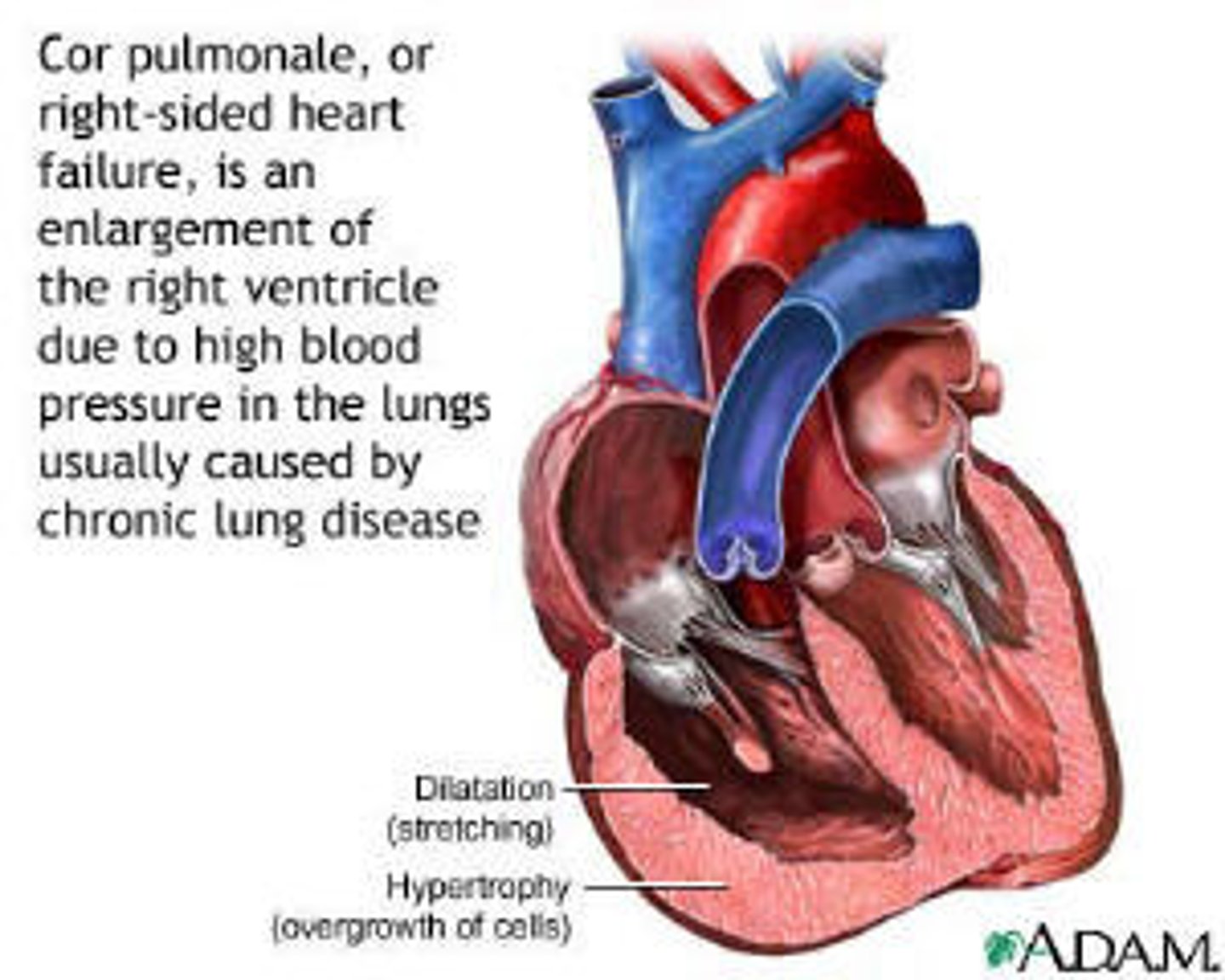
what is chronic bronchitis?
-inflammation of the bronchi, a productive cough, and excessive mucous production/secretions!!
-airway obstruction from excessive mucous and inflammation!
-not caused by an infection but by the nature of what is happening in their airways these patients will develop many infections
*think blue boater!
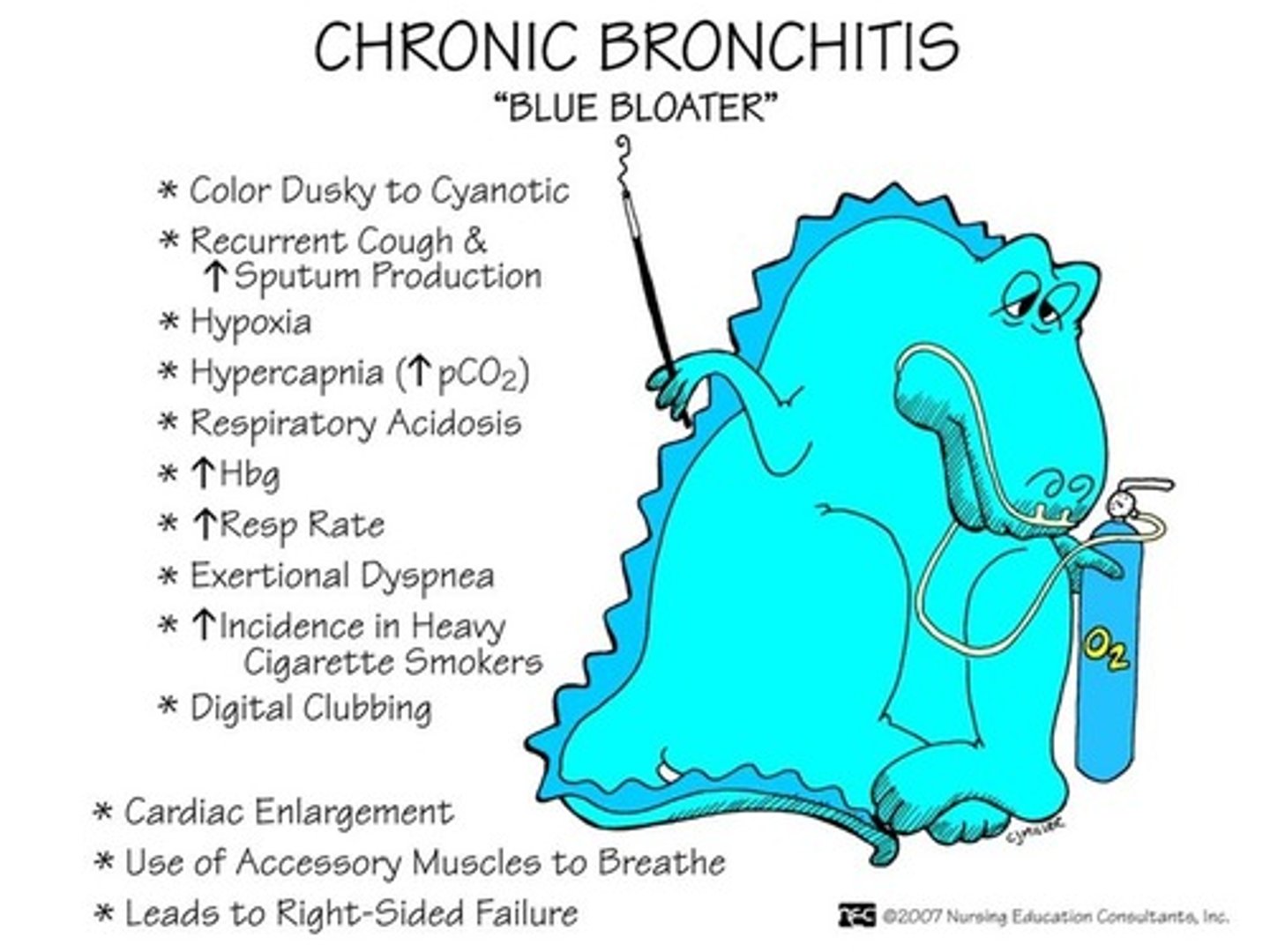
what are the bronchi?
-the two tubes which split from the trachea and carry air into the lungs
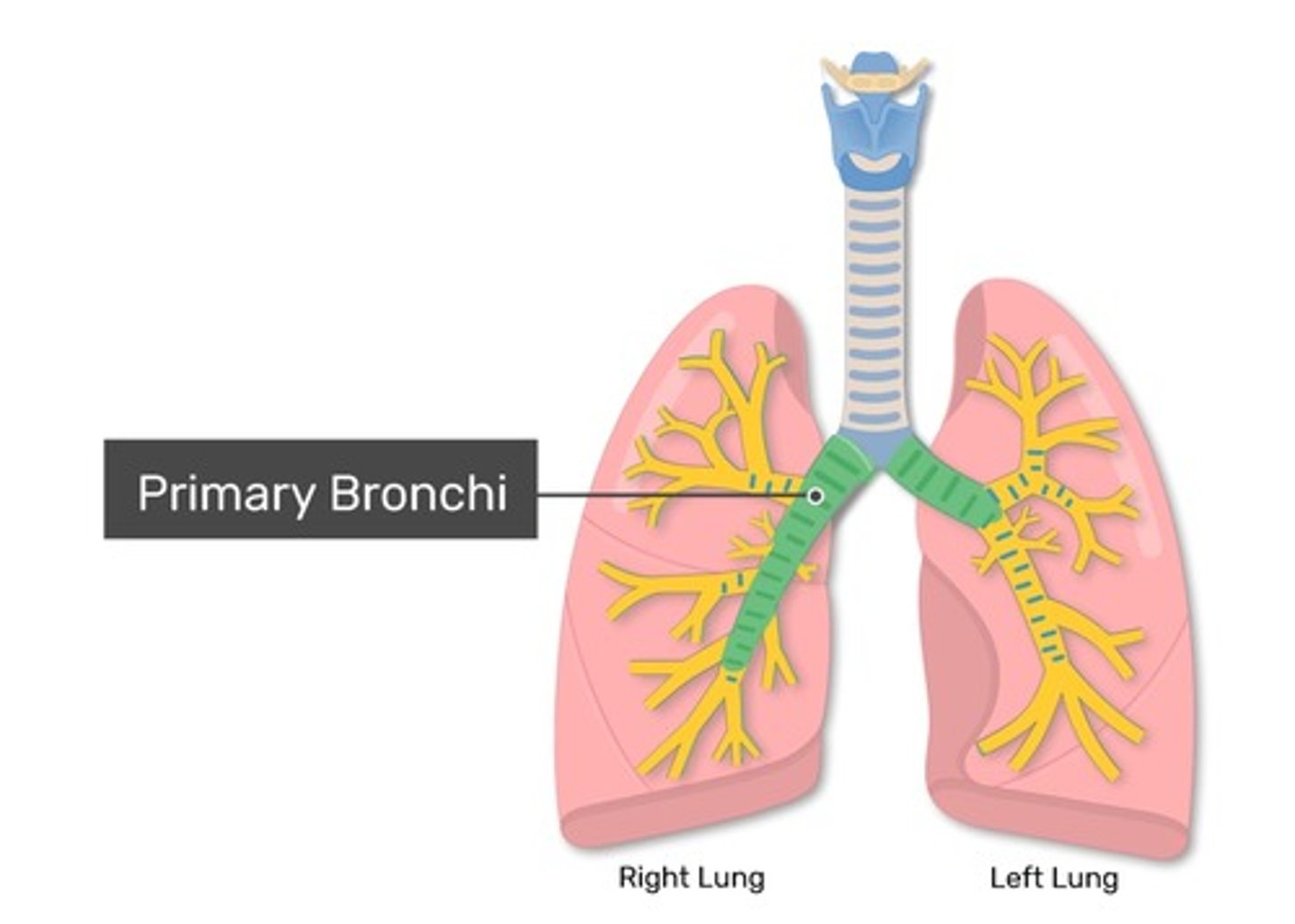
what are the complications of chronic bronchitis?
-frequent respiratory infections
-respiratory failure
what are the manifestations of chronic bronchitis?
-dyspnea at rest
-hypoventilation
-hypoxemia
-hypercapnia
-polycythemia (a blood disorder where the body makes too many red blood cells)
-cyanosis (clubbing fingers)!
-peripheral edema
-weight gain! LOTS OF SWELLING think blue boater
-wheezing
-chest pain (more like wall pain)
-fever
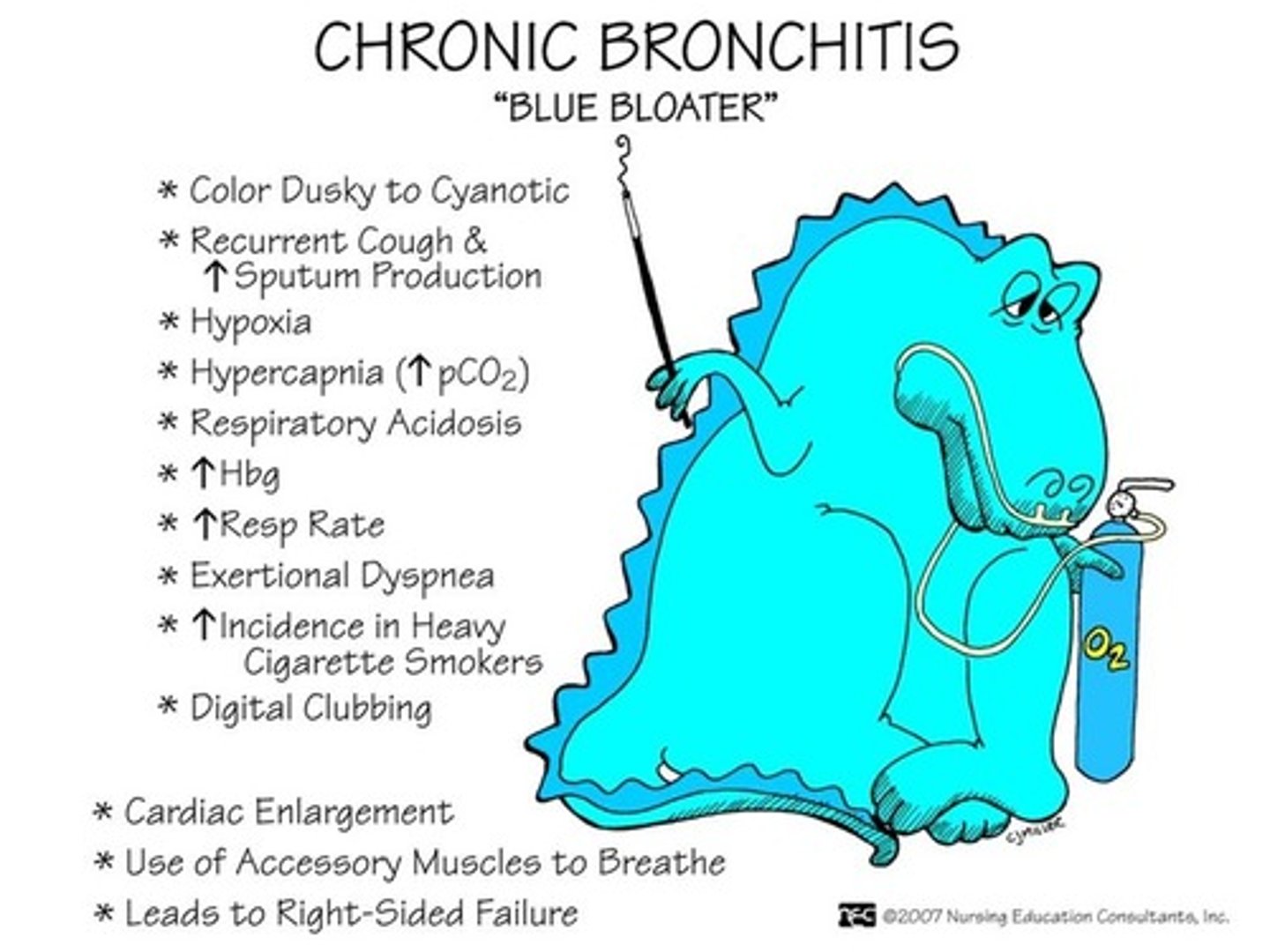
what is emphysema?
-destruction of the alveolar walls leads to large, permanently inflated alveoli
-HYPERINFLATION
-loss of elastic recoil and hyperinflation of the alveoli which leads to air trapping
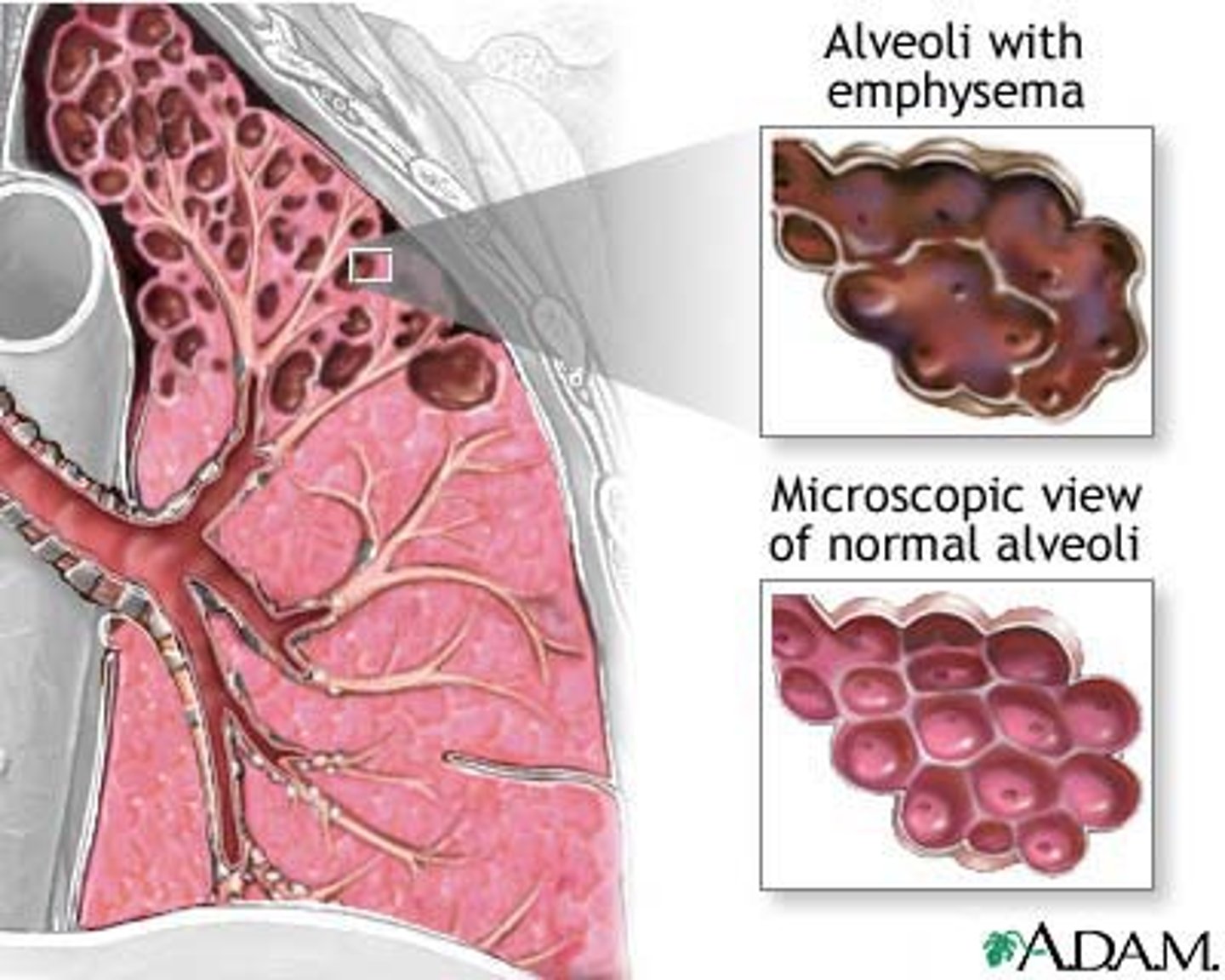
what causes emphysema?
-genetic predisposition
-smoking!
-enzyme deficiency that prevents normal lung repair
what are the manifestations of emphysema?
-dyspnea upon exertion (when the person is physically active)
-think pink puffer!
-wheezing
-chest tightness
-diminished breath sounds!
-barrel chest/increased anterior-posterior
-thoracic diameter (from 1:2 to 1:1) AKA barrel chest!
-activity intolerance
-hypoxia
-hypercapnia (increased CO2 in the blood)
-anorexia THESE PEOPLE ARE VERY THIN
-malaise
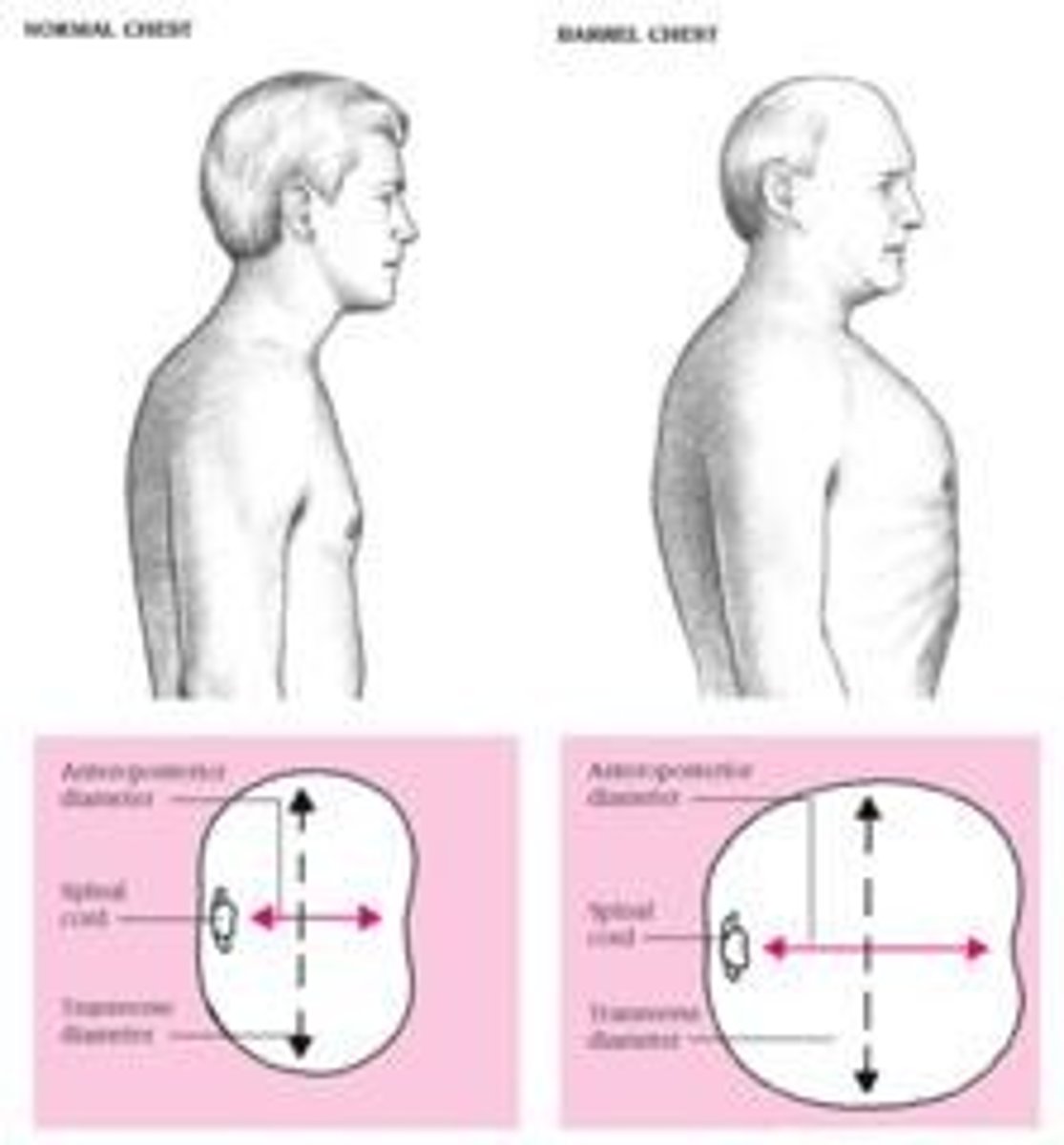
what is cystic fibrosis? (3 questions)
-an inherited/genetic life threatening of the mucous and sweat glands
-primarily affects the lungs and the pancreas but truly any duct that produces some kind of liquid
-affects cells that produce mucous, sweat, saliva, and digestive secretions. the secretions will become THICK AND STICKY!
-a terminal disease! this will kill you!
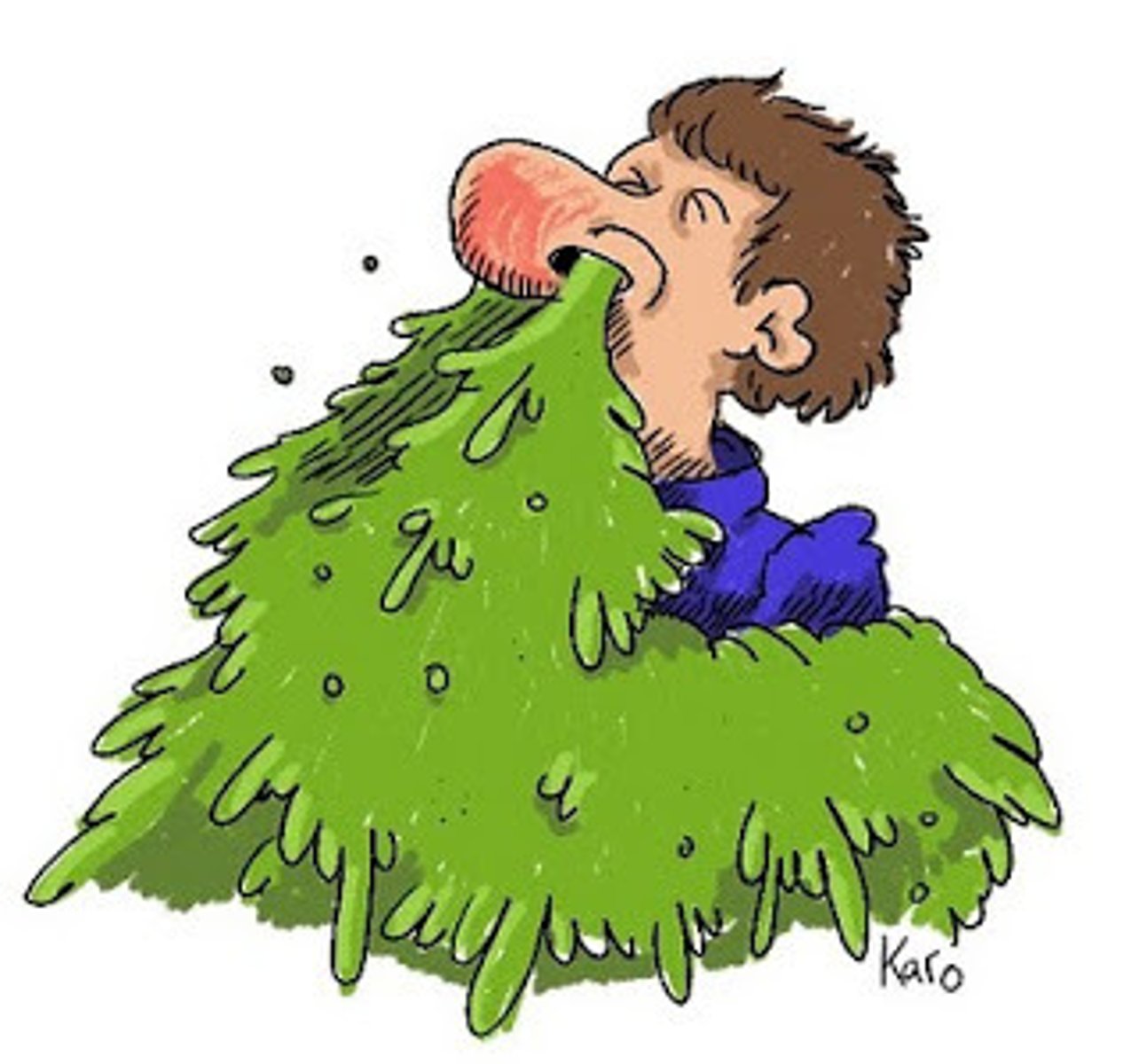
what causes cystic firbosis?
-an autosomal recessive mutation (chromosome 7) that leads to an abnormality in the protein involved in chloride cellular transport
*this defective chloride transport leads to sticky secretions
what are complications associated with cystic fibrosis?
-atelectasis
-repeated lung infections
-cor pulmonale and respiratory failure
-malabsorption
what are manifestations of cystic fibrosis?
-SALTY SKIN!
-meconium ileus (in newborns and it is their first stool but it gets blocked)
-steatorrhea (greasy fatty stool)!
-delayed growth and development
-cor pulmonal
-chronic cough
-fat soluble vitamin deficiency
-hypoxia (eventually leading to respiratory failure leading to death)
-audible rhonci
-activity intolerance
-DELAYED GROWTH AND DEVELOPMENT
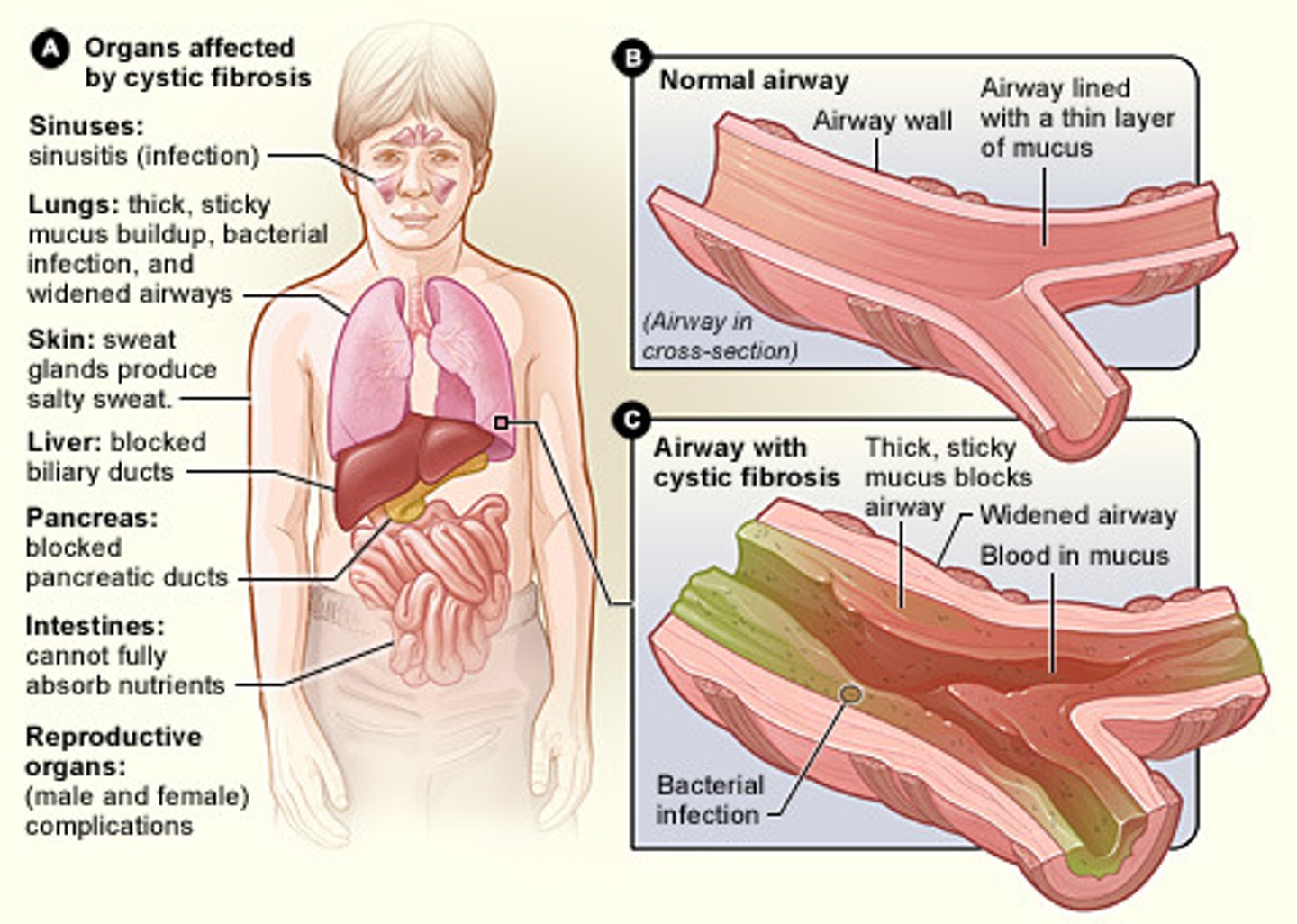
what is lung cancer?
-may occur as a primary or secondary tumor
-second most common cancer but #1 deadliest in women and men
-the risk of developing lung cancer is directly related to the amount someone has smoked a day and how many packs per year!!
what is small cell carcinoma lung cancer?
-almost exclusively in smokers!
-aka oat cell carcinoma
-extremely fast onset and progression
-DEADLY AND EXTREMELY AGGRESIVE
-metastasizes very fast!
-less frequent
what is non-small cell carcinoma lung cancer?
-most common type of malignant lung cancer
-has several sub-groups such as squamous cell and adrenocarcinoma
-tends to be very aggressive
what are the complications of lung cancer?
-airway obstruction
-lung tissue inflammation
-fluid accumulation
-paraneoplastic syndrome (an immune system reaction)
what are the manifestations of lung cancer?
-hemoptysis
-persistent cough or change in cough
-shortness of breath
-weight loss/anemia
-frequent respiratory infections
-dyspnea
-weight loss
what is pleural effusion?
-excess fluid (blood or pus) in the pleural cavity which can impair breathing
-may also see pleurisy which is inflammation of the pleural membranes
-this can compress the lungs!
-caused by an alteration in ventilation
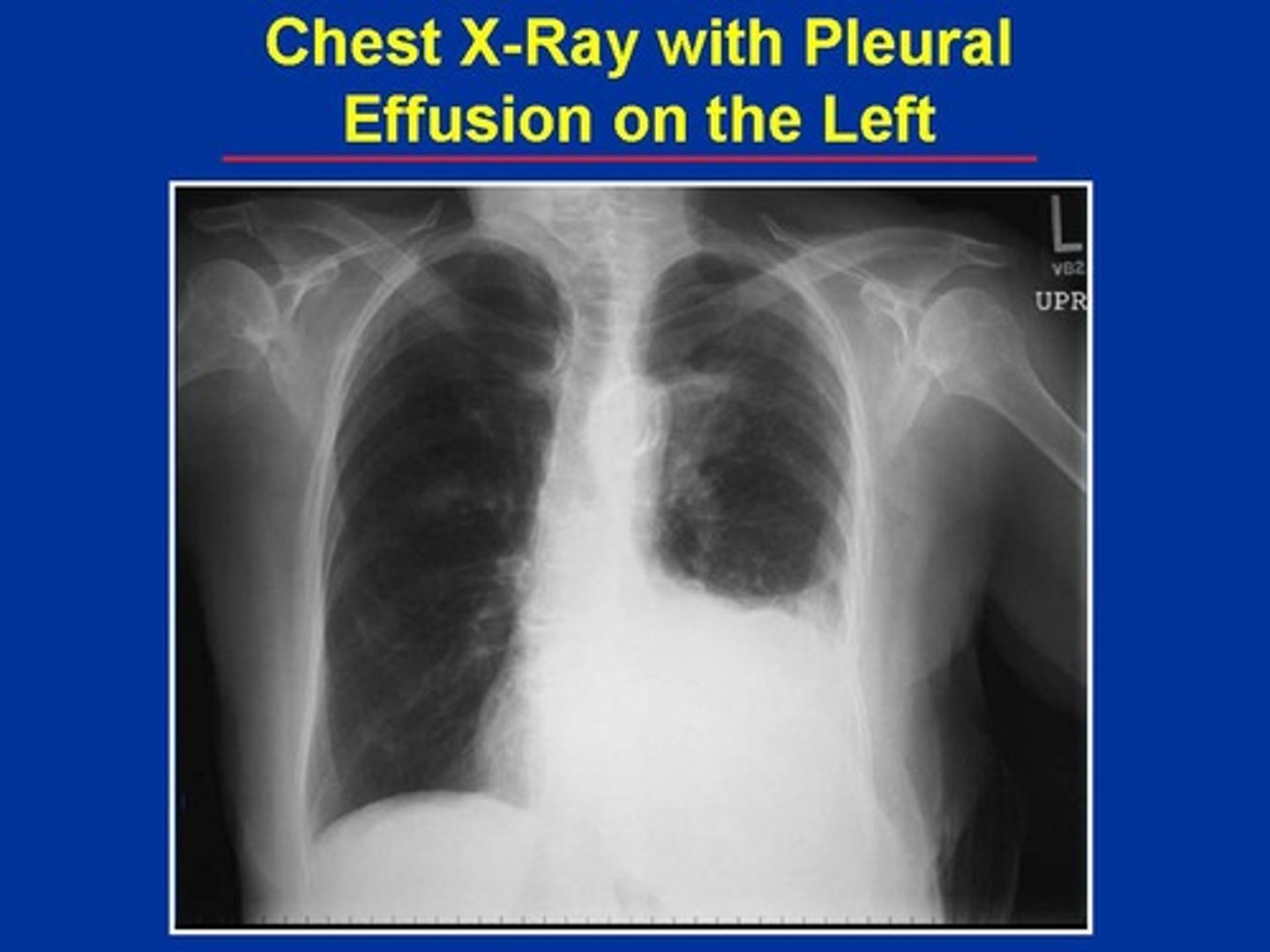
what is transudate fluid?
-clear, low-protein fluid that leaks out when pressure changes in blood vessels (like in heart failure or liver disease)
what is exudate fluid?
-cloudy, thick, high-protein fluid that leaks out when inflammation or infection makes vessels more permeable (like in pneumonia or cancer).
what is a hemothorax?
blood buildup in the pleural space
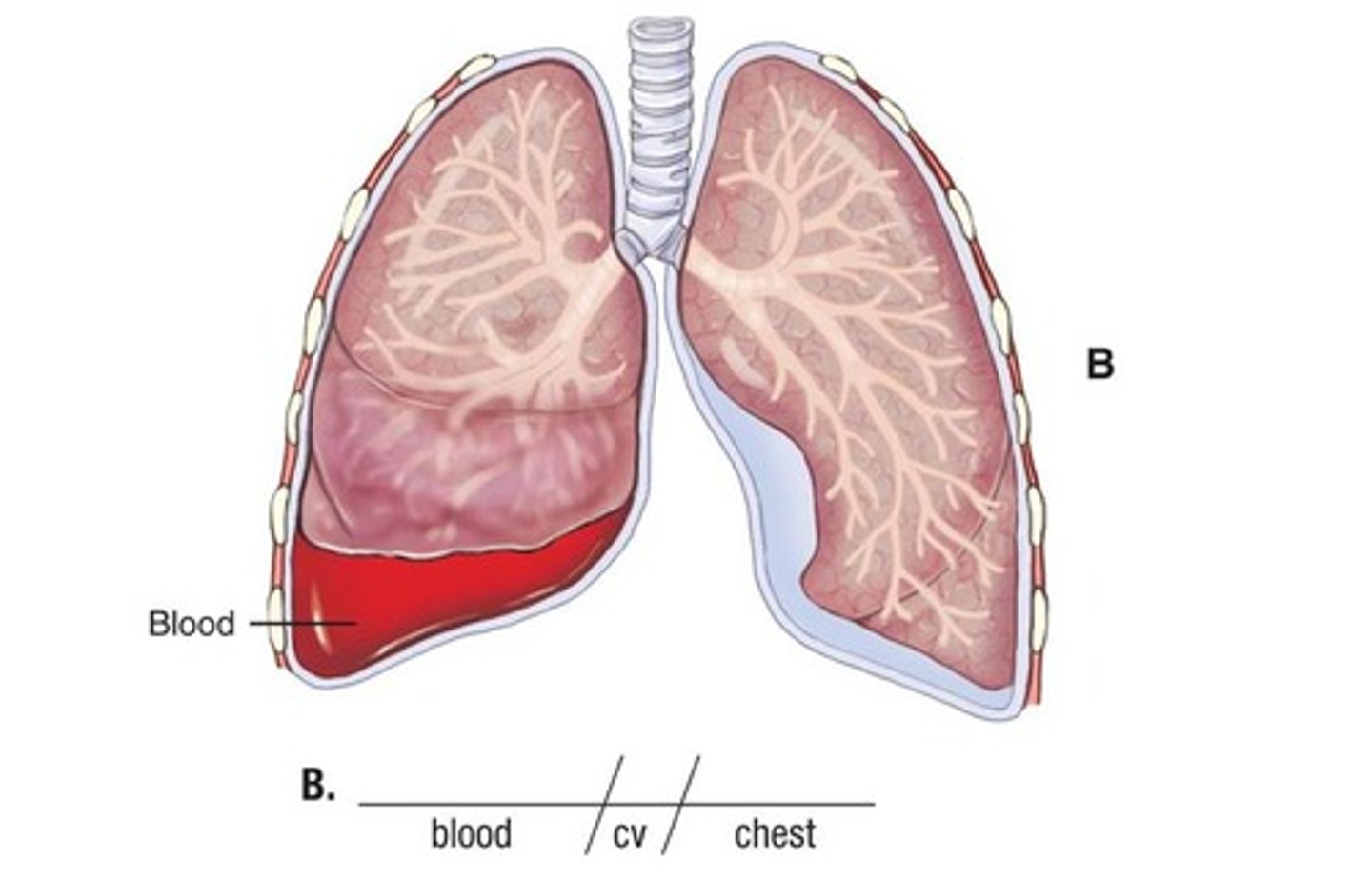
what is pleurisy (pleuritis)?
-inflammation of the pleural membranes
-often accompanies pleural effusion
-causes sharp chest pain during breathing
what are the manifestations of pleural effusion?
-absent lung sounds on the affected side!
-tachycardia!
-pleural friction rub you will hear on auscultation (when fluid rubs together aka abnormal lung sounds)!!
-dyspnea
-chest pain
-tachypnea
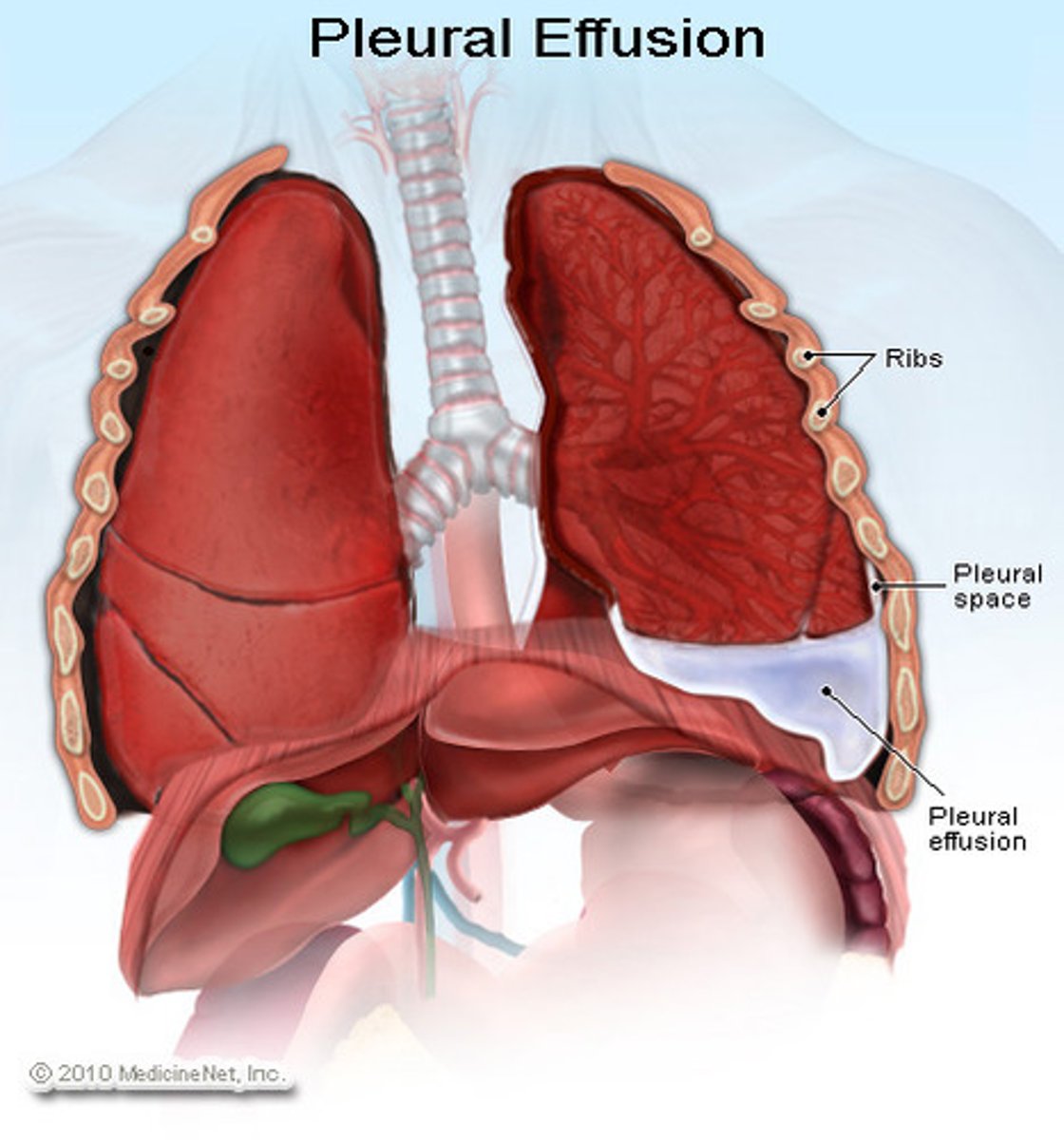
what is pneumothorax?
-collapsed lung
-air enters the pleural space which pushes on the lung and then causes it to collapse
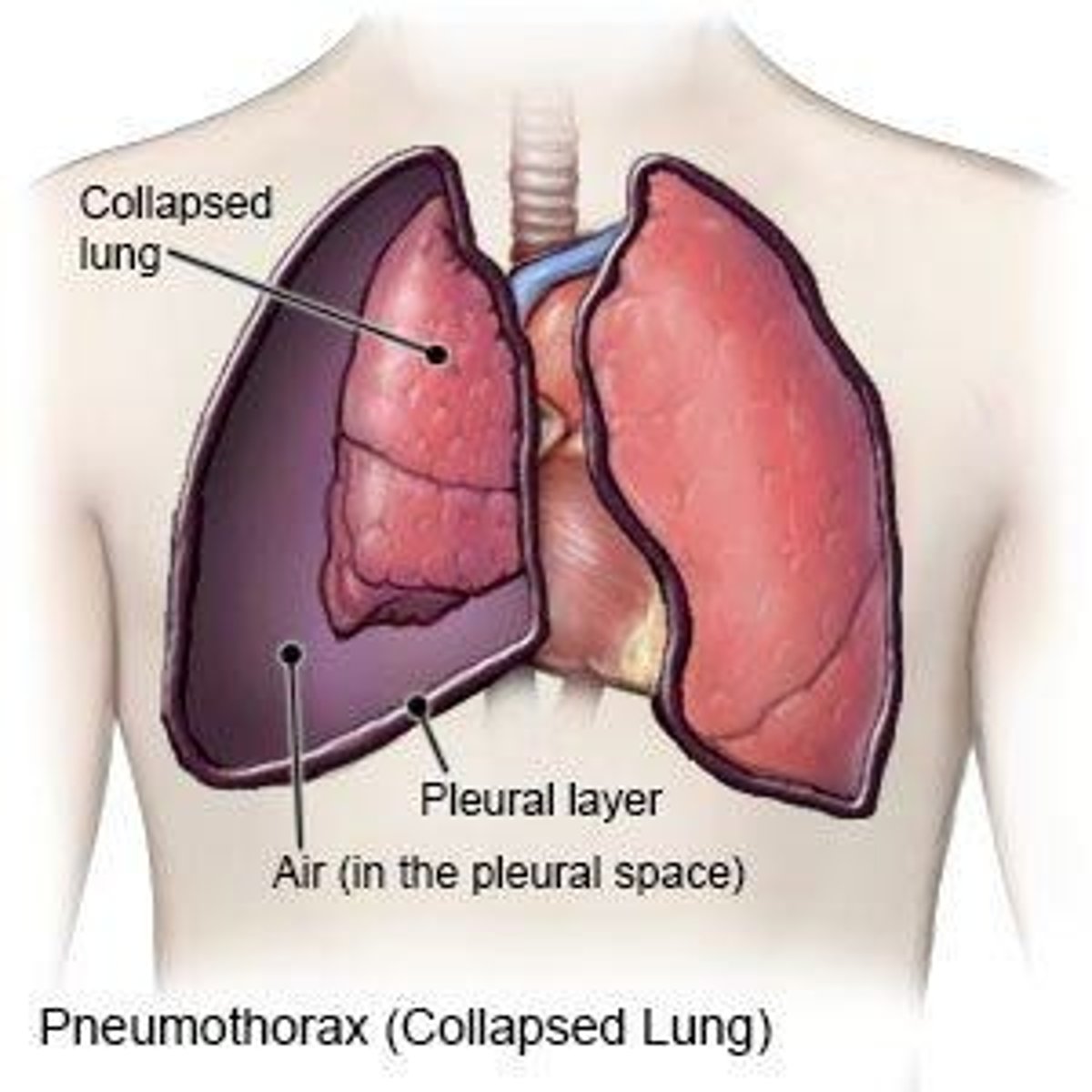
how does a lung collapse?
-the lung loses its ability to stay expanded.
-normally, the lung stays open because of negative pressure inside the pleural space (the thin space between the lung and chest wall).
-this negative pressure keeps the lungs stuck to the chest wall like a suction cup.
what are the risk factors associated with pneumothorax?
-smoking
-tall stature
-history of lung disease
-a previous pneumothorax
what is ventilation pneumothorax?
-air in the pleural cavity which can cause lung to collapse
what is spontaneous pneumothorax?
-where air enters from an opening in the internal airways
-happens without injury or trauma and air suddenly leaks into the pleural space.
what is primary spontaneous pneumothorax?
-usually mild
-occurs when a small air blister (bleb) on the top of the lung ruptures
- blebs are caused by a weakness in the lung tissue
-occurs in people with no hx of lung disease. they are usually tall, thin men!
what is a secondary spontaneous pneumothorax?
-more severe and even life-threatening!
-develops in people with preexisting lung disease
-weakened lung tissue ruptures
what is traumatic pneumothorax?
-caused by blunt (i..e rib fracture) or penetrating (i.e. gunshot) trauma
what is tension pneumothorax?
-the most serious type! BIG EMERGENCY!
-air gets trapped AND pressure keeps increasing every time the person inhales!
-this causes the affected lung to collapse and shifts the heart and other lung to the opposite side (called mediastinal shift).
-this prevents the heart from filling and pumping properly
what are the manifestations of pneumothorax?
-sudden chest pain
-drop in blood pressure (hypotension) and oxygen and rise in the hear rate (tachycardia)!
-chest tightness,
-dyspnea and tachypnea
-decreased breath sounds over the affected area!
-asymmetrical chest movement!
-trachea and mediastinum deviation!
-anxiety
-pallor